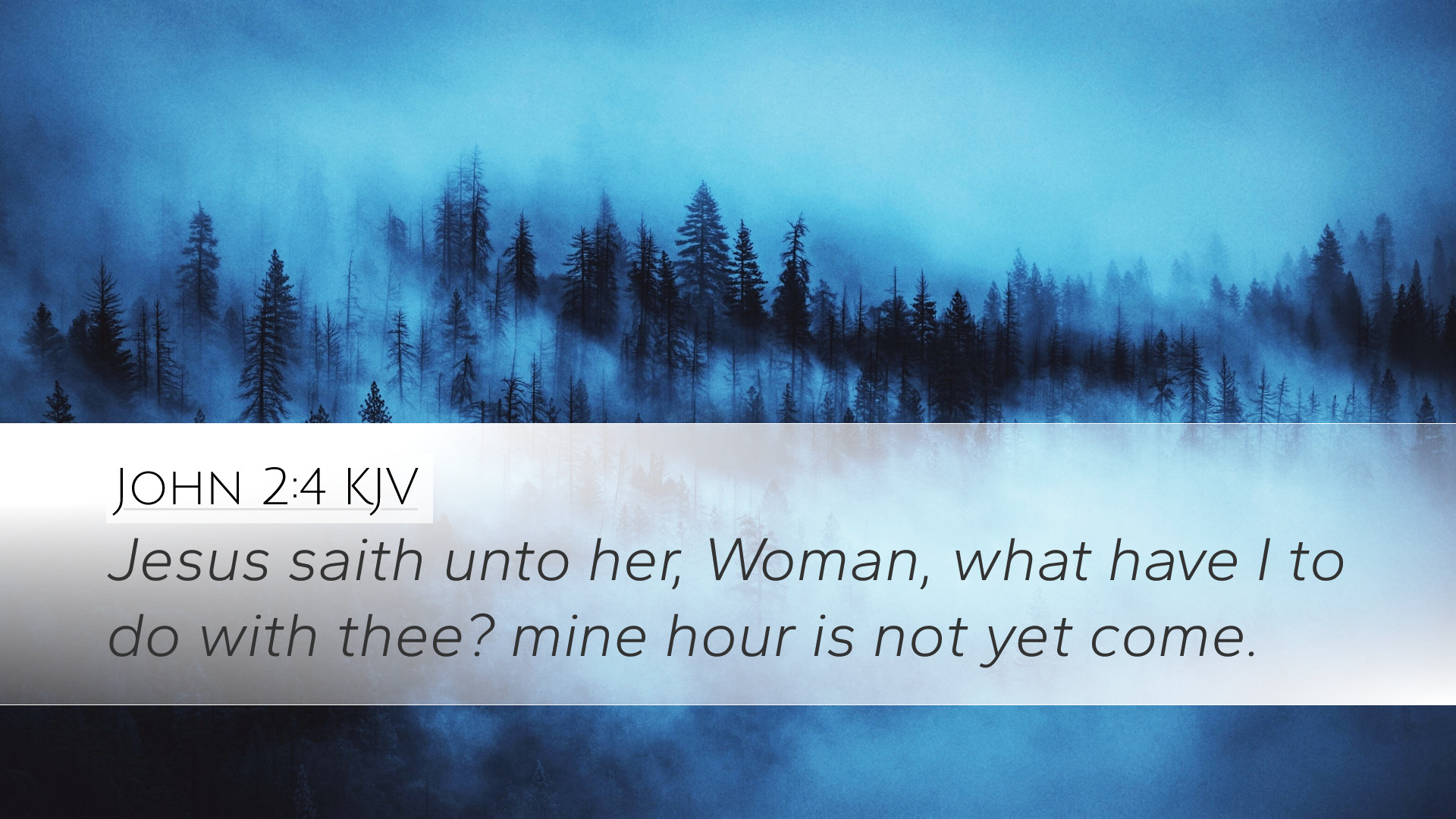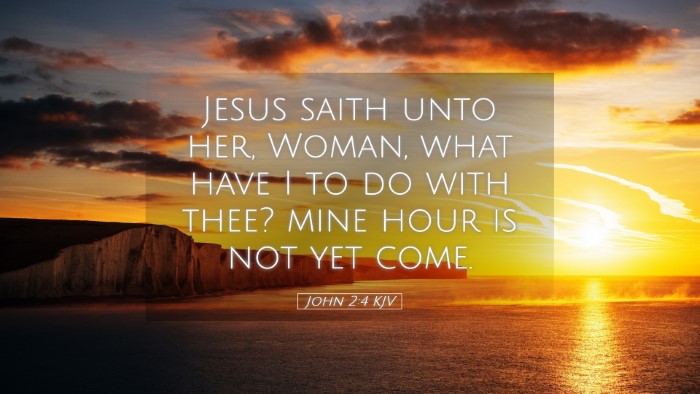Old Testament
Genesis Exodus Leviticus Numbers Deuteronomy Joshua Judges Ruth 1 Samuel 2 Samuel 1 Kings 2 Kings 1 Chronicles 2 Chronicles Ezra Nehemiah Esther Job Psalms Proverbs Ecclesiastes Song of Solomon Isaiah Jeremiah Lamentations Ezekiel Daniel Hosea Joel Amos Obadiah Jonah Micah Nahum Habakkuk Zephaniah Haggai Zechariah MalachiJohn 2:4
John 2:4 KJV
Jesus saith unto her, Woman, what have I to do with thee? mine hour is not yet come.
John 2:4 Bible Commentary
Commentary on John 2:4
Verse Text: “Jesus said to her, ‘Woman, what does this have to do with me? My hour has not yet come.’”
Introduction
The passage of John 2:4 occurs within the context of Jesus’ first miracle at the wedding in Cana. This significant event serves not only to reveal Jesus' identity as the Messiah but also highlights the interplay between His divine mission and human relationships. Public domain commentaries provide rich insights into the theological and practical implications of this verse, making it invaluable for pastors, students, theologians, and Bible scholars.
Contextual Analysis
In this passage, Jesus responds to Mary’s announcement that the wine had run out at the wedding feast. The socio-cultural context of the time placed a high value on hospitality and celebration, making this situation critical. Mary, likely concerned for the couple’s reputation and joy, approaches Jesus for assistance.
- Matthew Henry emphasizes that Mary’s request exemplifies her faith in Jesus' ability to intervene.
- Albert Barnes points out that the term “Woman” (“γύναι”) denotes respect yet indicates a certain distance between Jesus' mission and Mary's request.
- Adam Clarke remarks that Jesus’ response, while seemingly abrupt, is not a dismissal but rather a clarification of His mission.
Theological Implications
This verse raises profound theological themes regarding Jesus’ timing and mission:
- Divine Timing: “My hour has not yet come” reflects Jesus' awareness of the divine timeline. His miracles are not mere acts of compassion; they serve a greater purpose that unfolds throughout His ministry.
- Identity of Jesus: By addressing Mary as “Woman,” Jesus asserts His authority and His role in the divine economy, distinguishing His heavenly mission from earthly expectations.
- Human Needs vs. Divine Will: This exchange presents a tension between human need (the lack of wine) and divine purpose, reminding believers that God's plan often transcends our immediate situations.
Practical Applications
While the theological implications are crucial, practical applications stem from the interaction between Jesus and Mary:
- Faith in Action: Mary’s initiative in seeking Jesus for help serves as a model for believers, encouraging them to bring their needs to God with faith and confidence in His ability to respond.
- Understanding Divine Silence: Jesus' response may seem like a delay or denial, illustrating that answers to prayer may not always align with our timing or understanding.
- The Call to Trust: Mary’s role transitions from requesting assistance to trusting Jesus’ ultimate authority, highlighting the call for believers to surrender their desires to God's greater purpose.
Conclusion
John 2:4 encapsulates a moment of tension between human expectation and divine timing. The insights drawn from various public domain commentaries illuminate the rich theological dimensions of this verse. For pastors and scholars, this passage is a reminder of the interplay between faith, action, and the trust required in following Christ. Understanding this dynamic not only enhances one’s knowledge of scripture but also fosters deeper spiritual growth and reliance on God’s perfect timing.


